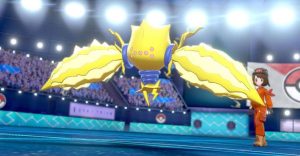Encanto’s Ending Rejects Multiple Classic Disney Movies

Here’s what the ending of Disney’s Encanto means and how it differs from previous Disney movies. Encanto is the 60th animated movie produced by Disney Animated Studios, but the first one to be set in Colombia’s gorgeous landscapes. The film follows a household with the typical dynamics of a traditional Colombian family, dictated by a strong sense of community, legacy, and connection with their land. The characters in Encanto reflect this unique setting — and the movie also imbues its story with magic, which plays by its own unspoken rules.
All of the members of the Madrigal family, except for Mirabel, possess their own magical ability or “gift.” Although the gift they’ll receive from their house isn’t known to them beforehand, the Madrigals all know that they’ll be assigned the most fitting one once they go through a ritual when they reach a certain age. This started when Abuela Alma, the matriarch of the family, lost her husband to conquistadors and got blessed with a magical candle. The candle powers her magical house, which her family affectionately calls “Casita.”
Things get a little more complicated in the 2021 Disney movie with the prophecy of one of Abuela’s sons, Bruno. He foresaw that Mirabel would apparently bring forth the end of the Madrigal family. Mirabel’s attempt to fend off this prophecy backfired, and she managed to look even more guilty when she went to Bruno for answers. However, Encanto’s final twist sees Mirabel restore Casita’s magic and her family’s gifts after everyone gathered together to rebuild their home. The events of the conclusion are a notable switch-up from Disney movies of yore – so here’s that ending, explained.
Encanto’s Ending Meaning (According To The Directors)

Encanto‘s ending certainly is an exercise in wrenching emotion from audiences. Everything is wrapped up, with the Madrigal family working together to restore their magical home and Mirabel discovering her own gift – the ability to bring the family together. It’s a great tale of being true to oneself and accepting one’s talents and gifts for what they are rather than trying to compare to another. While everything is put back together in the end there is one thing that remains cracked: the mountain. This small but vital detail can help the audience understand Encanto‘s ending. In an interview with The Wrap, Encanto directors Jared Bush, Byron Howard, and co-director Charise Castro Smith explained why exactly the mountain range remains cracked and the significance of this in regards to the movie’s ending. Castro Smith chimes in, “It was always this concept of when this kind of terrible foundational moment happened to the family, they were closed in and protected, but they were also sort of closed off from their past.” The Columbian mountain range in the movie essentially acted as a barrier for the Madrigal family which shut out their past, and the crack allows them to face it head-on. In addition to this, the crack in the mountain allows others to experience or even live there which could mean more for Encanto as an ongoing franchise. Castro Smith went on to say, “It was really intentional for the mountains to not completely close back up because now they’re able to see their past and interact with it in a healthy way without blocking it off.”
What Bruno’s Vision Really Means

To understand Encanto‘s ending, it’s time to talk about Bruno – specifically, the intention around his visions. Like all of his relatives, the candle that powers Madrigals’ house assigned John Leguizamo’s Bruno a special gift that he couldn’t choose or change. This means that while everything he foresees is open to interpretation, his visions are true to some degree. Bruno foresaw Mirabel in front of the Madrigals’ house while it broke apart, but he didn’t see anything beyond that. He knew that Mirabel could be the one to either destroy or save her family, but there was no way for him to be sure of which. It was simply open to interpretation.
In retrospect, it would be easy to say that the Madrigals’ house was destined to fall apart and that Mirabel was always destined to restore its magic afterward. But since the jade-like tablets that illustrate Bruno’s visions show two different readings, it’s clear that the future isn’t written in stone. It’s only after Mirabel finds Bruno again in the Disney animated movie and convinces him to look beyond that they see a glimmer of hope in the form of Mirabel hugging Isabella. Bruno’s visions only provide partial hints at more than one possible future. By pushing for the best possible outcome without guarantees, the cunning and charismatic Mirabel Madrigal managed to see that outcome materialize.
How Mirabel Restored The Madrigals’ Powers

Abuela Alma and the Madrigals accepted Mirabel for who she really was even before their gifts were restored. They all built a new house without the aid of their abilities, so they weren’t expecting it to come back to life. Mirabel’s placing of the doorknob revived Casita and restored its magic. The movie doesn’t explain exactly how this happened. But, given how the magical candle that powers the house has always made arbitrary decisions guided by its mysterious wisdom, the sudden return of Casita’s magic seems to come from the same line of thinking that kept Mirabel from receiving a gift.
Coupled with Bruno’s ambiguous visions in the Disney movie Encanto, Mirabel’s role in the family is to provide a lesson in acceptance. Casita’s magic chose Mirabel to be the member of the family who signaled their biggest crisis and restored their hope – not through any magical powers of her own, but through her influence on their lives. Casita’s magic chose various special symbols through which to manifest itself: the doors that represent each relative’s gift and their personalized rooms, for example. Similarly, the doorknob wasn’t proof of Mirabel’s awakened powers. It just represented the moment that Mirabel changed the Madrigals’ lives for the better while the house rebuilt itself.
The Meaning Behind Encanto’s Yellow Butterflies

Like some of the best animated movies from the last decade, Encanto provides a look into a culturally rich location that doesn’t feature in pop culture as much as it should. Apart from the arepas and a seemingly infinite variety of flowers, Encanto includes an important staple of Colombian culture: yellow butterflies. These little creatures are one of the most famous symbols in Gabriel García Marquez’s One Hundred Years of Solitude, where they represent bittersweet love, happiness, and loneliness.
Fittingly, the yellow butterflies have their big moment in Encanto when Abuela and Mirabel reconcile. This scene follows the point at which Mirabel felt the most like an outcast, but Abuela let her know that she loves her at a moment at a time of great loss. Despite having a big family that was always there to support each other, Mirabel had always felt lonely due to her lack of gifts. When Mirabel finally feels accepted, Encanto‘s yellow butterflies appear along the river in a cloud of bittersweet joy, just like they did in García Marquez’s One Hundred Years of Solitude.
How Mirabel Differs From Most Disney Princesses

Like most Disney Princesses, Mirabel feels a strong connection with her home yet struggles with feelings of inadequacy. But contrary to the classic Disney Princess tropes that lead heroines to embark on a new journey after proving their worth, Mirabel’s future points at a prosperous life in the same house she has lived her whole life, keeping the same people and lifestyle. She has learned to feel comfortable with the fact that she doesn’t have what all the others have. Another unique aspect of the movie is that Encanto doesn’t have the classic figure of a villain. Mirabel has to deal with the well-meaning but exceedingly high expectations of Abuela, but Abuela genuinely wants the best for her family and never performs devious deeds against any of her relatives. Additionally, Encanto follows Disney’s recent trend of abandoning the classic “true love” tradition, since not only does Mirabel avoid riding into the sunset with a Prince Charming, but she also doesn’t have any romantic interest at any point in the movie.
Encanto Ending Subverts Classic Disney Themes

Encanto does away with the message that problems can be defeated with either romantic love or physical might. Early Disney Princesses were always on a quest to find true love, a message that has evolved throughout the years to give the main characters more agency. Then, more popular Disney Princesses like Mulan, Elsa, and Raya achieved their victories by developing special skills through self-improvement to overcome obstacles. Encanto completely subverts both options. In fact, the movie does the exact opposite, as the Madrigals learn to stop relying on what makes them special. Instead of acquiring new skills as they reach a physical peak, they gradually lose their gifts and aren’t able to do anything about it. Mirabel doesn’t look for true love, lead the story because she can do what others don’t, or become an untouchable hero to the people around her. Instead, she tries to save the gifts of others, and she’s ultimately accepted for who she has always been.
Encanto 2 & Spinoffs Setup

With Casita’s magic restored and Mirabel still lacking a special ability, Encanto‘s animated story is a difficult one to follow. What makes Mirabel special is that she’s unremarkable, so giving her a special gift would feel like a betrayal of the first movie’s themes. A direct sequel must not reverse Encanto’s ending but develop one of the many narrative seeds the movie introduced. Bruno’s infamy as the black sheep of the family proved how easy it would be for a new relative (or a long-lost one) to use their gift for evil, which could force the Madrigals to come closer together and protect the source of their powers. The arrival of an outside threat to the Madrigals’ peace is also a likely possibility — more than one neighbor must have seen how dangerous they could be if they lost control of their powers.
Encanto’s Alternative Ending Explained

Much like the Marvel franchise, Encanto alternative ending actually originally included a short post-credits scene that was subsequently cut from the film. The scene acted as a humorous ending to the emotional movie, which is exactly why it wasn’t included in the final cut. This was revealed via Twitter by Encanto co-director Jared Bush during a Twitter watch-along back in January. The 5-second post-credits scene shows the capybara about to relieve himself on the side of the Madrigal home. The magical house obviously didn’t like this and decided to spray the capybara with water from the gutters causing him to scurry off. It’s a silly little scene that was animated by Meet the Robinsons creator Darrin Butters. While the scene would’ve added a humorous twist to Encanto‘s ending, it was ultimately scrapped. Studios decided to end the film on an emotional note instead, as it creates more impact around Maribel’s story about her gift as a whole. This didn’t stop Jared Bush from posting the clip on Twitter. And while Encanto‘s alternative ending never made the final cut of the film audiences at least get the chance to view the clip.
Encanto could build an extensive franchise with spinoffs that dive deeper into the life of each Madrigal. Antonio’s ability to talk to animals and Isabela’s newfound independence are just two of the stories with the most potential. An Encanto spinoff series released on Disney+ could also explore the early years of Julieta, Bruno, and Pepa, showing how they adapted to their special gifts without anyone to guide them. Although Encanto didn’t explicitly set up a continuation of the Madrigals’ story, there are several narrative threads that could expand into a thriving franchise.
About The Author

















